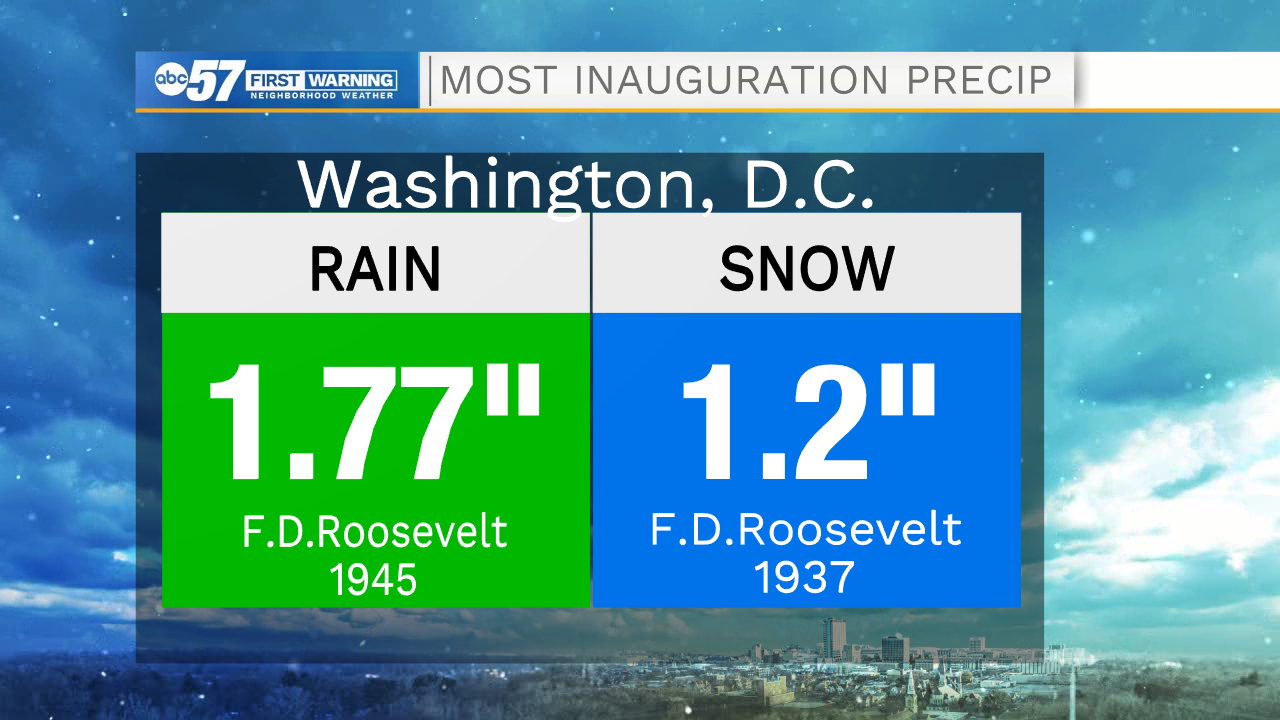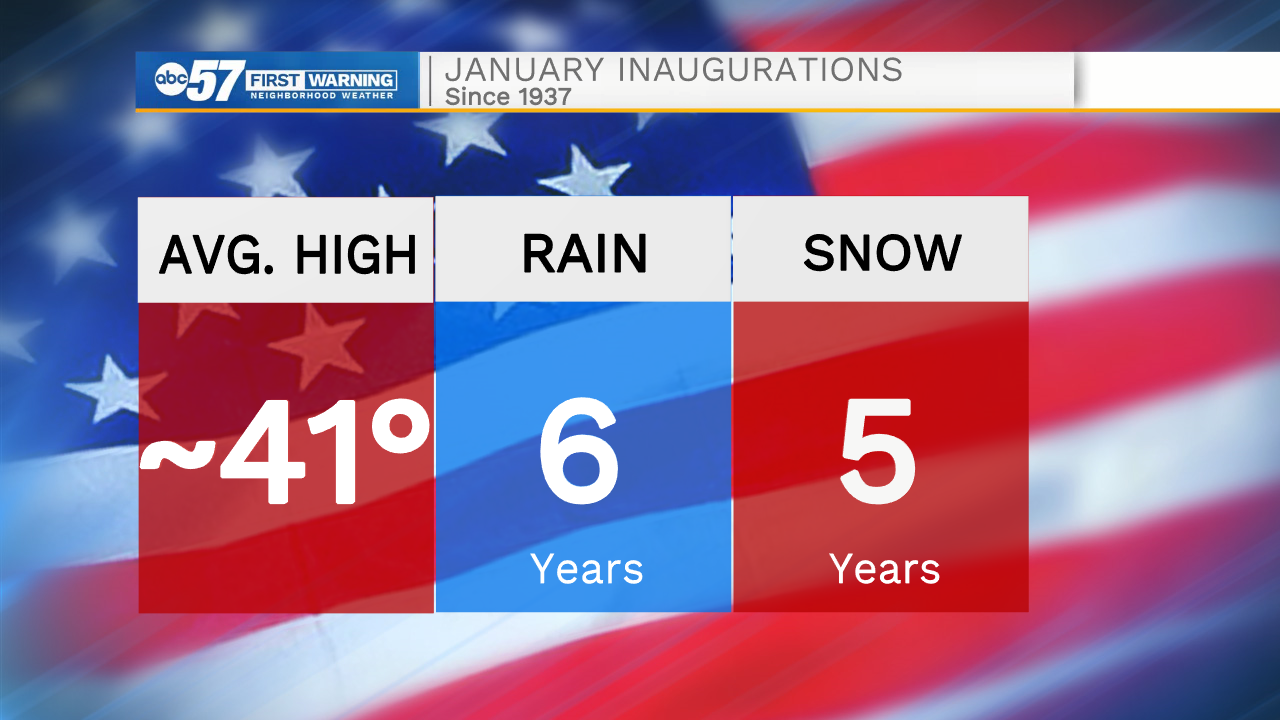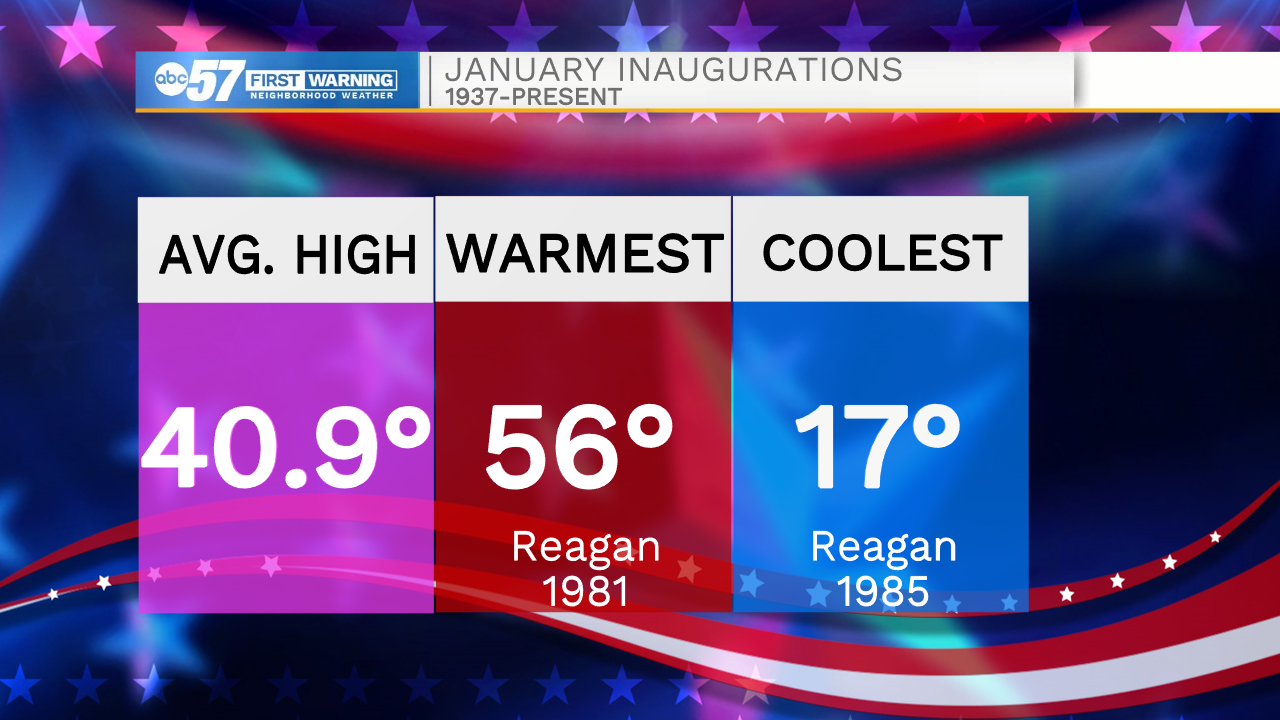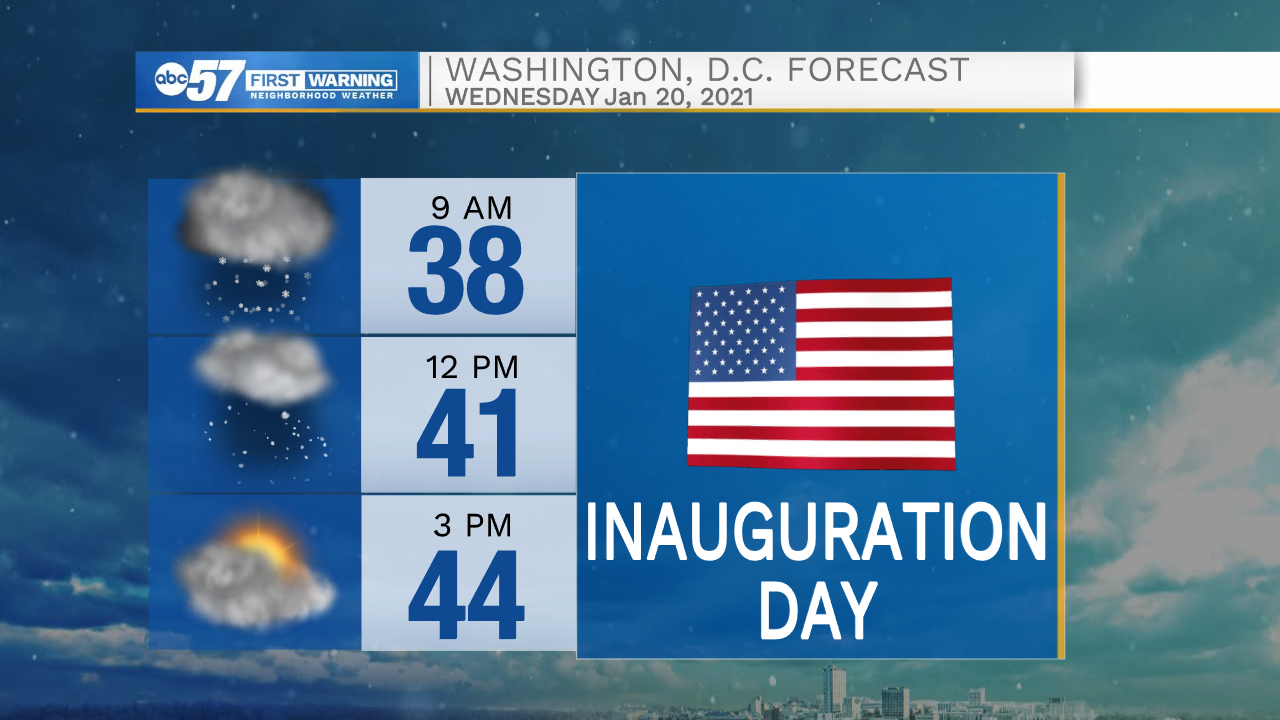Inauguration weather past and present
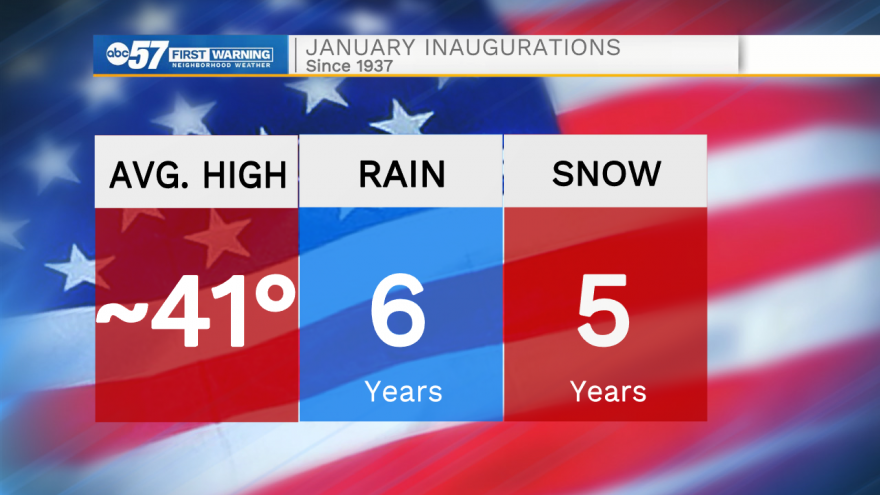
January 20 is a date that many historians and politicians hold dear in their heart. Every four years, a new chapter is written in the history books. As a meteorologist, of course I'm interested in the weather associated with each new president. Here's some of the facts I found about our nation's inaugurations.
Inaugurations fit into one of three categories: January, March, or other. Starting in 1937 with the passing of the 20th Amendment, the official inauguration date changed from March 4 to January 20. Weather data only goes as far back at the 1870s, so I looked at the 43 inaugurations starting with President Grant's second inauguration and ending with President Trump.
21 of these inaugurations were in January (which I'll focus on for this article, since we're adding a new January inauguration today). There are 16 March inaugurations with recorded weather data, and 6 inaugurations that occurred at other times of the year.
The rainiest January inauguration was Franklin Delano Roosevelt's second in 1937. Washington, D.C. picked up 1.77" of rain that presidential day. Eight years later in 1945, FDR had another monumental day- the snowiest January inauguration with 1.2" of snow. This was during his fourth inauguration.
It has rained at six January inaugurations, and it has only snowed at five.
The average high temperature for inauguration day is just under 41 degrees. President Reagan boasted the warmest inauguration in 1981 with a high temperature of 56 degrees. Four years later, Reagan then had the coolest inauguration. It was just 17 chilly degrees for his 1985 inauguration, which couldn't have been fun for any outdoor ceremonies.
Where does this year's inauguration stand? Nothing too notable for temperature. The forecast high for Washington, D.C. today is around 45 degrees. The day started with a few snowflakes (which has only happened five other times in history), but it looks like skies will be clearing and dry by the time the Oath of Office is taken. It is breezy. The Field of Flags decorating the National Mall will be waving in the wind.
Looking at the March 4 set of inaugurations, the average temperature was about 43 degrees. President Wilson's first inauguration and President Cleveland's inauguration had the warmest March highs, tied at 58 degrees.
Notably, President Taft's inauguration featured 9.8" of snow, which is a record for March and January inaugurations.
There were six other inauguration dates in history (Presidents Ford, Johnson, Truman, Coolidge, T. Roosevelt, and Arthur). Only two of these took place in Washington, D.C. Ford's inauguration is technically the warmest in history, with a high of 83, but it also took place on August 9, 1974.


